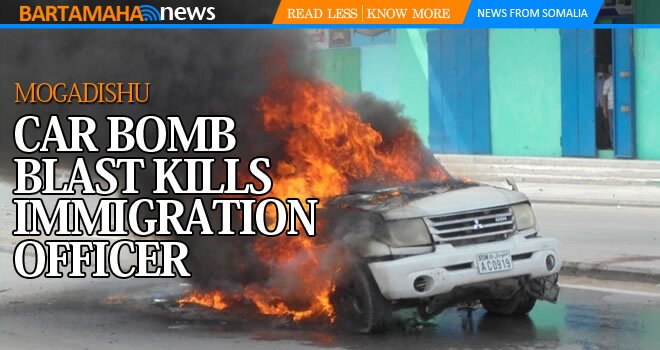JOURNALISTS UNDER ATTACK IN SOMALIA AS GOVERNMENT STEPS UP MEDIA CRACKDOWN.
 Bartamaha (Nairobi):- Amnesty International has called on Somali authorities and armed opposition groups in the country to respect freedom of expression amid a growing government crackdown on independent journalism.
Bartamaha (Nairobi):- Amnesty International has called on Somali authorities and armed opposition groups in the country to respect freedom of expression amid a growing government crackdown on independent journalism.
A campaign of harassment and intimidation has seen a spate of arrests and interrogations of journalists since June. Media workers already face serious threats from armed groups, with 10 reporters killed in the last 18 months.
Amnesty International’s new briefing paper, Hard News: Journalists’ lives in danger in Somalia, launched on Somali Human Rights Day (22 July), documents the targeting of journalists in the country.
“Somali journalists are being prevented from informing the local population about daily violence that affects their lives – a service that is particularly vital in a conflict too dangerous for consistent international media reporting,” said Michelle Kagari, Amnesty International’s Africa deputy director.
“Somalia’s authorities must investigate the attacks and harassment of journalists, both by armed groups and members of their own government, and ensure that freedom of expression is respected.”
Somalia’s internationally backed Transitional Federal Government (TFG) controls only a small part of the capital Mogadishu, while the rest of southern and central Somalia is under the control of armed groups.
The two largest are al-Shabab and Hizbul Islam, which are allied against the TFG but have also engaged in fighting against each other.
While the armed groups are the most deadly threat to journalists in the country, media workers have come under increased pressure from the TFG in a recent clampdown on independent journalism.
On 26 June, New York Times correspondent Mohammed Ibrahim fled Somalia after threats from government security forces, following the publication of an article alleging that government forces included child soldiers.
On 29 June, several journalists were wounded when missiles were fired on a press conference being held by Al-Shabab in Mogadishu. Local journalists at the scene believe they were indirectly targeted by the TFG, who did not want the press conference to go ahead.
On 1 July, police detained journalist Mustafa Haji Abdinur and freelance cameraman Yusuf Jama Abdullahi for taking pictures of their colleague, photojournalist Farah Abdi Warsame, who had been hit in the crossfire during fighting in Mogadishu.
The journalists were interrogated and forced to delete their photographs. Warsame was only able to get medical treatment after being interrogated.
“Rather than protecting journalists from feared armed groups such as al-Shabab, the Somali authorities are increasing the problems for media workers by adding to the harassment they face,” said Michelle Kagari.
Armed groups opposed to the Somali government now control many towns in the country. They have killed, harassed and intimidated journalists, shut down radio stations, restricted what local media can report on and frequently prevent journalists from publishing information which they believe is unfavourable towards them. This makes it almost impossible to disseminate vital information on the situation in Somalia.
On 5 May – the most recent journalist killing – three gunmen shot dead broadcast journalist Sheik Nur Mohamed Abkey as he was returning home from the state-run Radio Mogadishu.
He was abducted by the gunmen near his home in southern Mogadishu and then shot repeatedly in the head. Members of al-Shabab claimed responsibility for the killing.
In 2009, nine journalists were killed, the highest total in any one year since 1991, when armed conflict broke out after the collapse of ex-President Siad Barre’s government.
In the first five months of 2010, in addition to the killing of one journalist, many more were abducted and harassed by armed groups.
The TFG was backed militarily by Ethiopian troops who remained in Somalia until early 2009. TFG officials and institutions are now protected by the African Union Mission in Somalia, AMISOM.
The TFG is opposed by a number of armed Islamist groups. Groups on both sides of the conflict often overlap, forge or shift alliances, or divide into separate groups.
———————————————————-
Source:-Amnesty.
Comments
comments
 Calendar
Calendar




































